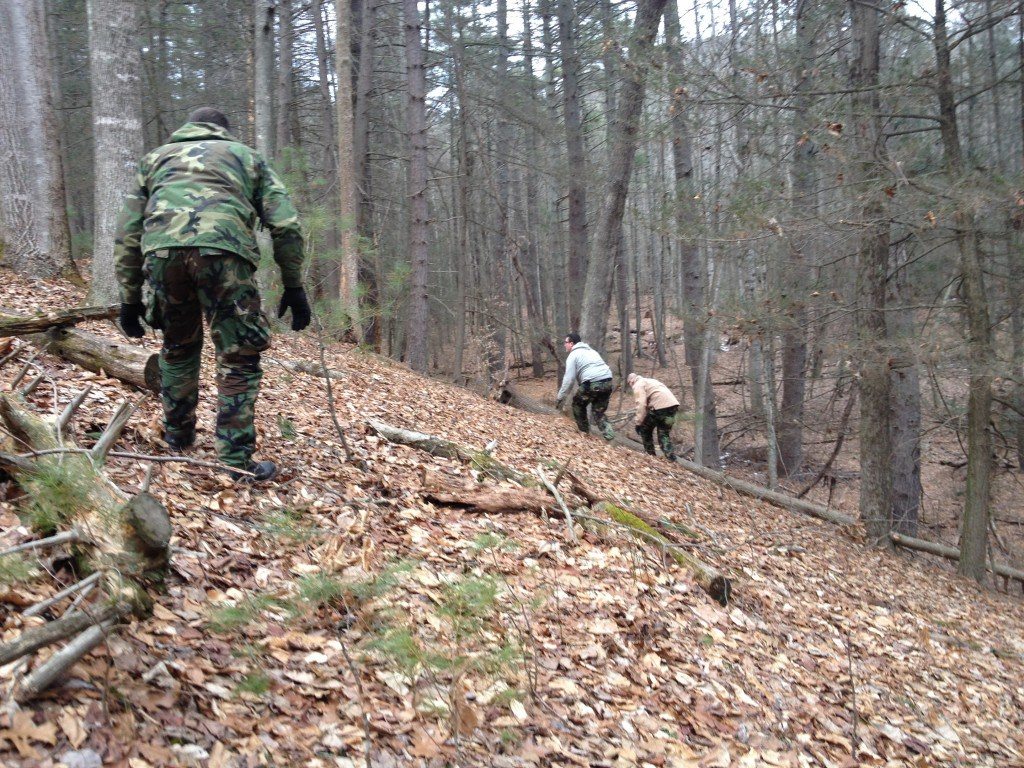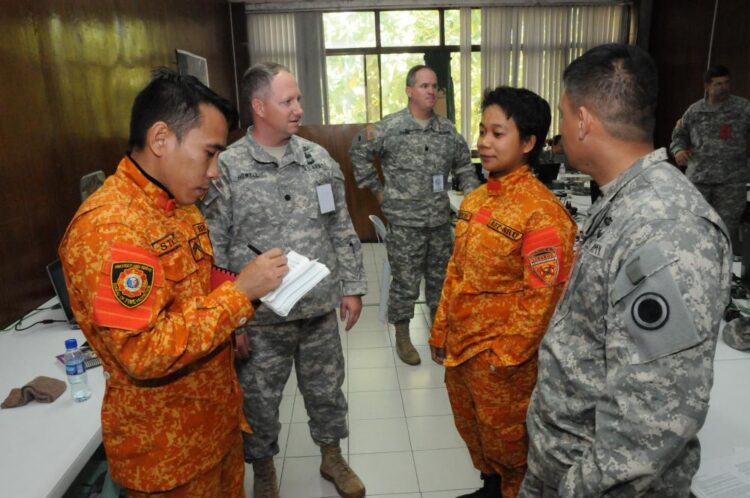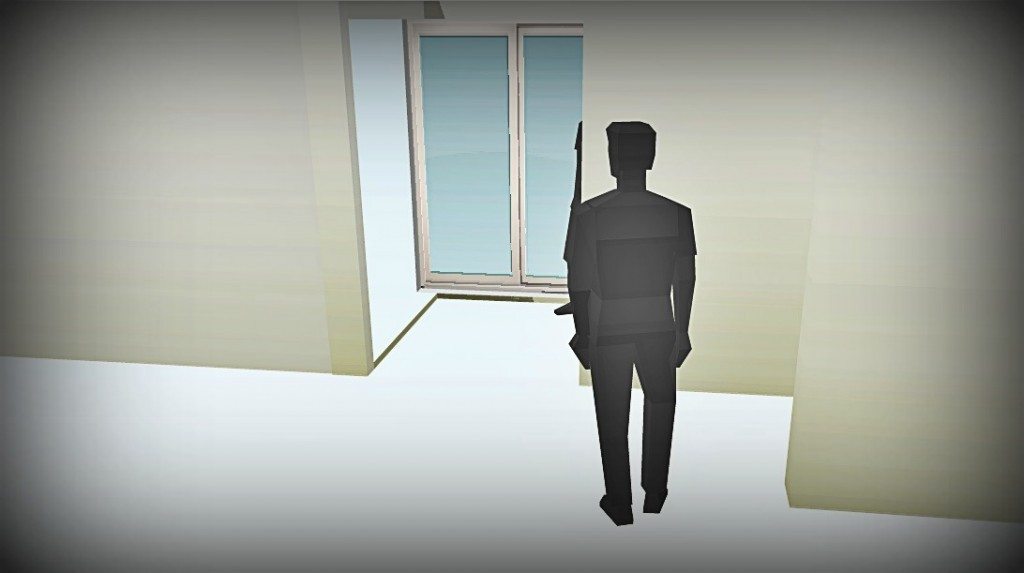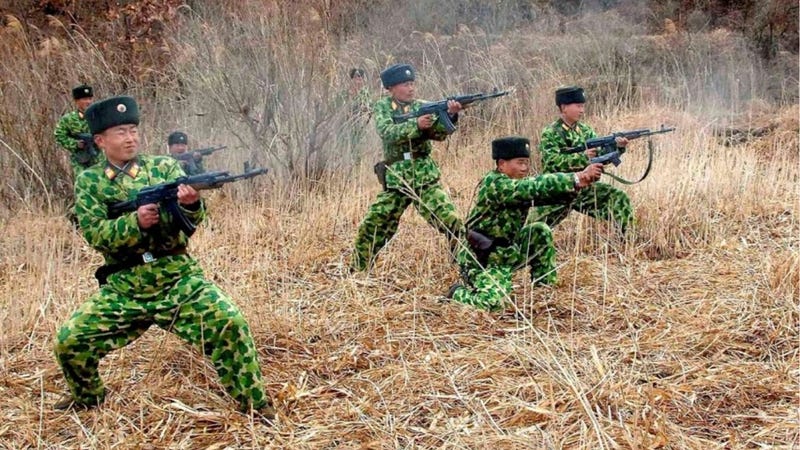In this image above, who is the most visible?
You’re never going to be able to look in two directions at one time. But you’ll be able to remain safer if you stick to some basic tactical principles. Sure, it would be best to have a partner or teammates, but sometimes you have to operate on your own.
Clearing your house of intruders, entering a foreign house to secure supplies, or remaining unmolested in the outdoors are survival situations you may find yourself in one day. Moving house to house or tree to tree, while pursuing someone or being pursued, is never ideal for a solitary person. No matter the situation you are in try to be aware of target indicators.
What is a target indicator?
A target Indicator is anything (usually it is an object that presents itself subtly) that registers your mind to the potential presence of an enemy or registers you as a presence to the enemy. What are examples of indicators? The Army Field Manual FM 23-10 for snipers breaks it down here. I’ve added a bit to it in my article below.
Looking for people means you must pay attention to their target indicators as well as making sure you avoid giving yourself away because of your own target indicators.
An example of bad camouflage
Approaching a cabin dressed in contrasting clothing
The people in the hillside photo were given the task of approaching a cabin in the woods. Instructors, playing bad guys, were at the top observing their movements.
Each student wore a garment that was a different color and pattern. It is clear from looking at the picture to know which student avoided being detected. The gray ‘hoodie’ was easily spotted and the tan jacket provided some coverage. Look at the disparities in color. If the students utilized the terrain to their advantage by blending as best they could, likely it would be more difficult to spot them.
The two students in the background were easily spotted. The student in the foreground was not detected. Students who stayed nearly motionless, silent, low to the ground and used a bounding technique to cross from tree to tree did very well.
Soldiers of Forward Support Company, 2nd Battalion, 8th Infantry Regiment, 2nd Brigade Combat Team, 4th Infantry Division, participate in uniform field testing at Fort Bliss Training Center‚ Area 19 outside Alamogordo, N.M., Sept. 21, 2012. The six Talon soldiers participated in the two-week training, which tested multiple uniforms for their thermal reflection during both the day and night.
Some target indicators:
- Sound.
It is important to maintain noise discipline. Actions such as talking, whispering, breaking branches, inserting a magazine, even urinating over dried brush can draw unwanted attention. Even a lack of sound is a target indicator.
- Movement.
If you must move, move slowly, because quick movements attract attention. Movement is more noticeable during hours of daylight then darkness. Because the human eye is attracted to movement try not to move unless you must or you will draw attention directly to you.
- Improper camouflage.
Man hiding in a corner: or is it a coat on a coat rack? What should you look for?
In this picture, our Good Guy is looking for a Bad Guy in a darkened room. Our Good Guy nearly crosses the apex of the corner but he spots something deep into the intersection near the glass doors. Is it a coat draped over a coat-rack or is it a person in hiding?
Our hero should be very cautious. If his first goal was to find a person in the house then an outline might be exactly what he thinks it is. Don’t second guess yourself that it is only a jacket; are there feet, is there an outline of a head? It is a person in hiding? Look for clues.
Depending on the situation, our Good Guy can shoot through the sheet rock/corner and kill our Bad Guy. He can also shout for the person to come forward or he can do nothing if he hasn’t yet given away his position.
Whatever option our Good Guy decides he should always give himself as much distance from the apex as the terrain will allow in order that he can react.
An example of bad camouflage from North Korea. Shoot me! Shoot me, I’m here!
Shine.
Anything that reflects light can be detected; your face, a wristwatch, glass, etc. Really, any equipment that is not painted in flat colors will be detected.
Outline
Most man-made things are going to lack the irregular shapes found in nature. If you peer deep into a room you just might see the silhouette a person hiding in a corner. I once hunkered in a ravine for two hours in the dark staring at a shape near a tree, that I thought could be a person. The shape finally moved and it was a person.
Contrast with the background. The texture of an item, the color and the pattern are things to be aware of. Orange camouflage is good for revealing yourself to other hunters but it sure isn’t if you want to avoid being hunted.
- Disturbance of wildlife.
The absence of sound is a target indicator. Animals that stop chirping or croaking are two examples of target indicators.
A frightened animal, such as birds flying away, or a multitude of deer rushing from the area are indicators.
- Odors.
Human waste, smoking, soaps and lotions, cooking and repellents are just a few things to be aware of.
We can go on and on from here. There are a plethora of things that you must search out; Creaky floors, the reflection of a person on a glass picture frame, or a shadow on the floor because a person is back-lit from sunlight (check the rooftops).
Lastly, avoid crowding the spaces you are searching because it will decrease your reactionary gap. Give yourself distance when you hear a sound and try to avoid presenting signs of your presence for the bad guy. Move slowly yet efficiently, at a rate your body can control without giving yourself away. No need for you to scuff the floor with your boot or bump into furniture because you were sloppy.
Keep your weapon pointed to the area your indicator came from. Eyes, muzzle, threat. If you hear a sound or see something ‘odd’ it is best to have a weapon at a ready position then to have it holstered.
Image from www.dvidshub.net





[…] Being Unseen, What are Target Indicators? […]
(Don McCollor) … Also in my humble opinion, keep a mental image of what you are observing (like the the person by the tree). Even without movement, the appearance/disappearance of a shape is a warning. Have stalked a couple deer (not hunting and no camo). Deer are good at seeing movement (Drawn a curtain an inch in the old trailer house – deer gone) but not at situational awareness. Froze when I saw both deer. When they looked down to graze or look away, took a couple more steps. Then freeze again. Got within fifty to thirty feet before giving up the game…